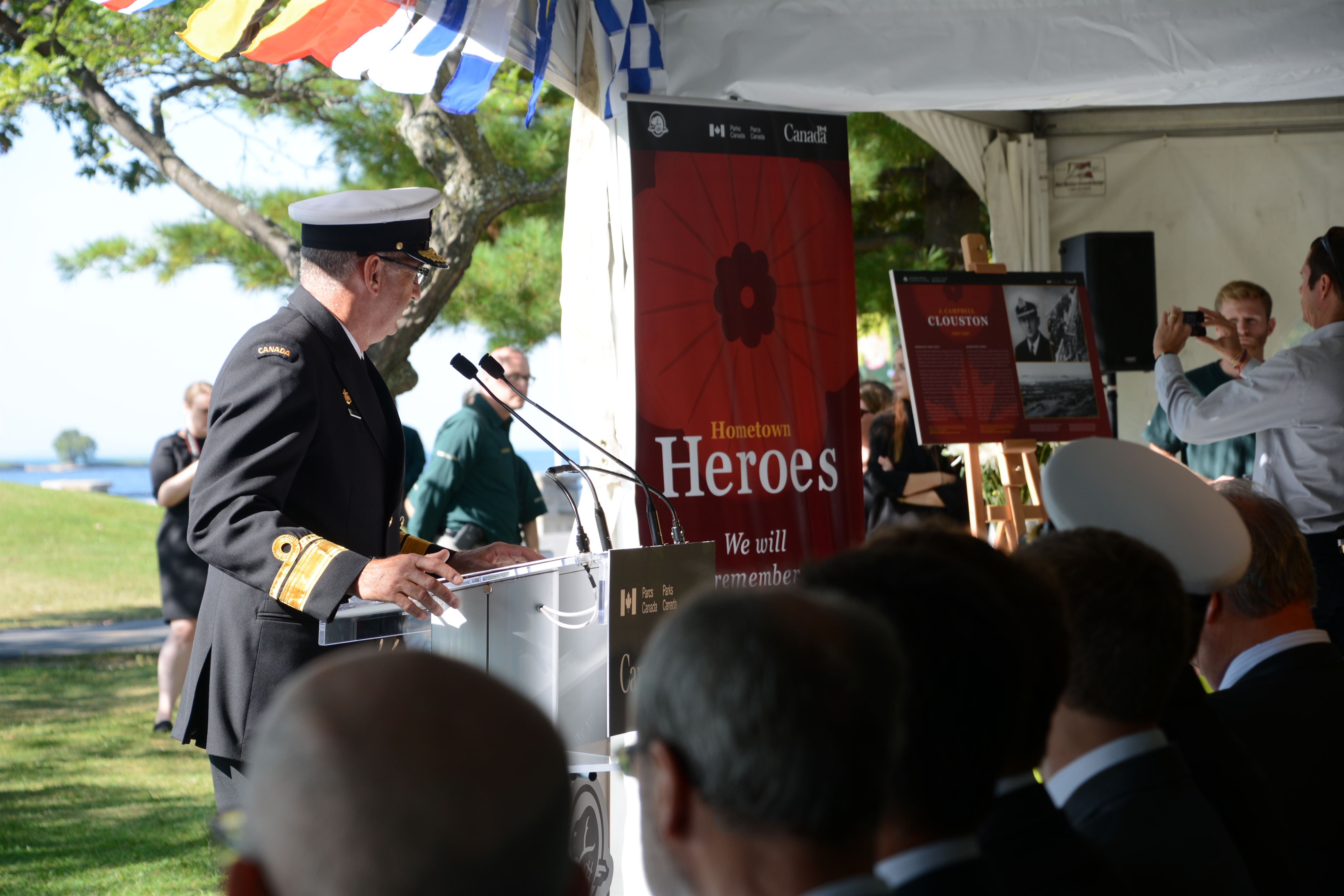J. CAMPBELL
CLOUSTON
1900-1940
HÉROS DE CHEZ NOUS
Né et élevé à Montréal, Campbell Clouston participa à des courses de voiliers sur le lac Saint-Louis pendant sa jeunesse. Il fréquenta le Lower Canada College et l’Université McGill avant de s’enrôler dans la Marine royale britannique en 1918. Pendant les vingt années suivantes, il progressa dans les rangs d’officiers et prit le commandement du destroyer HMS Isis en 1937.
En 1940, les forces allemandes gagnèrent du terrain, repoussant les soldats britanniques, français et belges sur la côte à Dunkerque en France. Le capitaine de frégate Clouston participa à l’opération Dynamo (26 mai – 4 juin) pour évacuer les troupes alliées prises au piège. À titre de responsable de la jetée de l’est, un brise-lame en guise de quai, il travailla sans relâche pendant six jours sous les tirs ennemis. Faisant preuve de courage, il organisa et supervisa ainsi l’embarquement des soldats sur les bateaux.
Alors que l’on prévoyait l’évacuation de 45 000 soldats, le « Miracle de Dunkerque » contribua à sauver la vie de plus de 338 000 soldats. La majorité embarqua à partir de la jetée de l’est, sous le commandement de Clouston. À la suite d’une brève réunion en Angleterre, lors de son retour vers Dunkerque pour coordonner l’évacuation des derniers soldats français et belges le 2 juin, son bateau fut ciblé par des avions ennemis et il coula. Campbell Clouston périt en mer.
HOMETOWN HERO
Born and raised in Montreal, Campbell Clouston raced sailboats on Lake Saint Louis in his youth and later attended Lower Canada College and McGill University before enlisting in Britain’s Royal Navy in 1918. Over the next two decades, he rose through the officer ranks and was appointed to command the destroyer HMS Isis in 1937.
In 1940, as British, French and Belgian soldiers were pushed back to the coast of France at Dunkirk by advancing German forces, Commander Clouston took part in Operation Dynamo (May 26-June 4) to evacuate the trapped Allied troops. As piermaster of the east mole, a breakwater pressed into service as a wharf, he worked courageously around the clock for six days while under enemy fire, organizing and overseeing the boarding of troops onto waiting ships.
Although expectations were for 45,000 to be evacuated, the “Miracle of Dunkirk” resulted in more than 338,000 troops saved. The majority of those were embarked from the east mole under Clouston’s command. After a brief meeting in England and while returning to Dunkirk on June 2, to coordinate the rescue of remaining French and Belgian soldiers, his motor launch was attacked and sunk by enemy aircraft. Campbell Clouston perished at sea.

